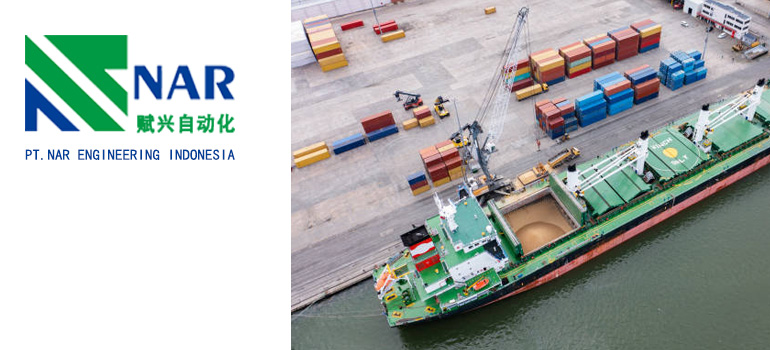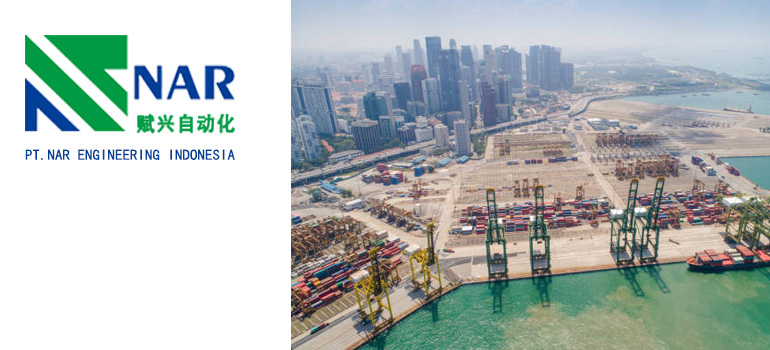Summary:
Innovative Port Logistics Solutions Revolutionizing Shipping
Historical Overview of Port Logistics Solutions
Technology Driving Port Logistics Innovation
Sustainable Practices in Port Logistics Solutions
Port logistics mainly relies on manual operations and simple tools, mainly relying on human and animal labor to complete the loading, unloading, and transportation of goods. With the passage of time and the development of technology, port logistics has gradually achieved mechanization and automation, greatly improving efficiency and throughput.
Historical Overview of Port Logistics Solutions
Early stages of port logistics
For centuries, port logistics has been the core of human trade and logistics activities. In the early stages, port logistics mainly relied on manual operations and simple mechanical equipment, such as human and animal labor, to complete the loading, unloading, and transportation of goods. During this period, port logistics was relatively simple and inefficient, but it also laid the foundation for the development of port logistics.
The Industrial Revolution and Its Impact
With the arrival of the Industrial Revolution, port logistics has undergone tremendous changes. The Industrial Revolution brought about the development of technologies such as steam engines, railways, and modern docks, greatly improving the efficiency and throughput of port logistics. During this period, port logistics began to achieve mechanization and automation, laying the foundation for the development of modern port logistics.
Technological Innovation and Modern Port Logistics
Since the 20th century, with the continuous progress of technology, port logistics has ushered in a series of technological innovations. The application of advanced technologies such as automation equipment, Internet of Things technology, and big data analysis has made port logistics more intelligent and efficient. Modern port logistics solutions not only improve the loading and unloading speed and accuracy of goods, but also provide more convenient and reliable services for global trade and logistics.
Sustainability and future prospects
In recent years, with the popularization of sustainable development concepts, port logistics has also begun to focus on sustainability and environmental protection. The construction of green ports and the utilization of clean energy have gradually become important directions for the development of port logistics. In the future, we can expect port logistics solutions to continue to innovate in technology, efficiency, and environmental protection, bringing more convenience and sustainable development to global trade and logistics.
Technology Driving Port Logistics Innovation

The application of automation and robotics technology
Automation and robotics technology play a crucial role in port logistics. The application of technologies such as automated dock equipment and robot loading and unloading robots has made the loading and unloading process of goods more efficient and accurate, greatly improving the operational efficiency of port logistics.
The integration of the Internet of Things and data analysis
The integration of the Internet of Things and data analysis technology has brought tremendous changes to port logistics. By installing sensors on equipment and goods, collecting real-time data and analyzing it, port managers can better monitor and manage port logistics operations, achieving visualization and optimization of the transportation chain.
The Application of Artificial Intelligence and Machine Learning
The application of artificial intelligence and machine learning technology provides more intelligent and adaptive solutions for port logistics. By analyzing a large amount of data and pattern recognition, the artificial intelligence system can predict the demand for goods and traffic conditions, adjust the transportation plan in advance, and reduce congestion and delay.
The Development of Virtual Reality and Augmented Reality Technology
The development of virtual reality and augmented reality technology has provided new possibilities for port logistics training and simulation. Through virtual reality technology, port staff can conduct simulation training and real-time simulation operations, improve operational skills and safety awareness, and reduce the risk of accidents.
The application of blockchain technology
The application of blockchain technology provides a safer and more transparent transaction environment for port logistics. Through blockchain technology, the transaction and transportation process of goods can be fully tracked and traceable, preventing theft and fraud, and improving the security and credibility of transactions.
Sustainable Practices in Port Logistics Solutions
Green initiatives and environmentally friendly port construction
More and more ports are paying attention to environmental protection and sustainability, adopting a series of green initiatives and environmental measures. For example, measures such as adopting clean energy, improving water quality, reducing noise and air pollution can promote sustainable development and ecological balance of ports.
The Application of Renewable Energy in Port Operations
Port operation involves a significant amount of energy consumption, and the application of renewable energy can effectively reduce reliance on traditional energy and lower port carbon emissions. For example, the application of renewable energy such as solar and wind energy has been widely promoted in some ports.
Management and reduction of carbon footprint
Carbon footprint management and reduction in port logistics are important components of sustainable practices. By adopting low-carbon technologies, optimizing transportation routes, improving transportation efficiency, and other measures, carbon emissions from ports can be effectively reduced, reducing adverse impacts on the environment.
Renewable materials and energy-saving design for port logistics facilities
The construction and operation of port logistics facilities can also adopt renewable materials and energy-saving designs to reduce resource and energy consumption. For example, using recycled materials to build port terminals, storage facilities, and optimizing equipment energy efficiency can effectively reduce the impact on the environment.
Social responsibility and stakeholder collaboration
Finally, the sustainable practice of port logistics solutions also requires cooperation and joint efforts from port managers and stakeholders. By formulating sustainable development strategies and establishing social responsibility projects, ports can better fulfill their social responsibilities and drive the entire industry towards a more sustainable and environmentally friendly direction.
These sustainable practices not only contribute to protecting the environment and improving the competitiveness of ports, but also contribute to promoting the sustainable development of global trade and logistics industries.

